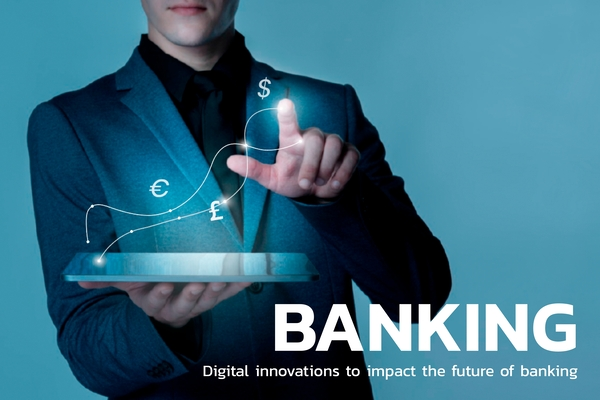In today’s digital age, the way we manage and store our money has evolved dramatically. With the rise of digital wallets like PayPal, Google Pay, and bKash, more people are turning to technology-driven platforms for financial transactions. At the same time, traditional banks continue to serve as pillars of financial trust, offering long-standing security, regulation, and physical access.
But when it comes to safety, which option should you trust more? In this write-up, I will compare digital wallets and traditional banks, exploring their strengths, weaknesses, and overall security to help you make an informed decision.
Understanding Digital Wallets
A digital wallet, or e-wallet, is an application or online service that stores payment information securely and enables users to make transactions without using physical cash or cards. Whether you’re paying for groceries, transferring money to a friend, or shopping online, digital wallets offer fast and convenient solutions.
These platforms typically store users’ credit card or bank information securely and are accessible via smartphones, computers, or wearables. Popular names in this category include PayPal, Google Pay, Apple Pay, Venmo, and in Bangladesh, bKash and Nagad.
What Do Traditional Banks Offer?
Traditional banks have been the foundation of financial systems for decades. They offer services such as savings and current accounts, loans, credit cards, and investment products. Most importantly, banks are regulated by national financial authorities and backed by deposit insurance, ensuring the safety of your funds even in times of financial instability.
While banks are adapting to digital banking trends, they continue to maintain physical branches and in-person customer support, offering a sense of security to those who prefer human interaction over digital-only services.
Comparing Security Features
When it comes to keeping your money safe, both digital wallets and traditional banks use robust security measures, but there are key differences.
Authentication and Encryption
Digital wallets have introduced advanced technology to secure transactions. Features such as biometric verification, two-factor authentication (2FA), and end-to-end encryption are standard across most platforms. These tools ensure that only authorized users can access the wallet and complete transactions.
Traditional banks, while also adopting encryption and 2FA, are sometimes slower to implement the latest technology. However, they make up for it with secure internal systems and strict regulatory compliance that govern their cybersecurity protocols.
Regulatory Oversight
Banks are heavily regulated by central banks and financial authorities in their respective countries. For example, in the U.S., the FDIC insures deposits up to $250,000 per account. Similarly, in Bangladesh, the Bangladesh Bank regulates commercial banks to ensure consumer protection and financial stability.
Digital wallets, on the other hand, may not always fall under the same regulatory umbrella. While reputable platforms do follow guidelines and may obtain licenses, many operate under newer or evolving financial technologies laws, which might not offer the same level of consumer protection.
Fraud Risks and Recovery
Both digital wallets and traditional banks face risks of fraud, phishing, and cyberattacks. However, their responses to these risks differ.
Banks typically offer strong fraud detection systems and have well-established procedures for recovering stolen funds. If you report unauthorized transactions in a timely manner, there is a good chance the bank will investigate and refund the amount.
Digital wallets, though secure, often place more responsibility on users to protect their accounts. If someone gains access to your phone or password and you don’t act quickly, your funds might be lost with limited recovery options, especially if the platform is not regulated or lacks responsive customer support.
Accessibility and Convenience
The ease of use of digital wallets is one of their greatest benefits. You can send money, make purchases, or pay bills instantly from your phone. There’s no need to visit a bank or ATM, and you can often complete transactions within seconds, especially valuable during emergencies or while traveling.
Traditional banks offer digital banking apps too, but they may have limitations on transaction speed, especially for cross-border transfers. Moreover, certain services still require visiting a branch, which may not always be practical.
Device Dependency vs Physical Security
Digital wallets rely entirely on your device and internet connection. If your smartphone is lost or compromised, you may temporarily lose access to your funds. That said, most platforms allow you to remotely lock or deactivate your wallet.
In contrast, traditional banks provide physical access through branches and ATM cards, reducing the risk of being locked out of your account due to a lost phone. However, physical cards and checks can also be stolen or misused, though they are generally easier to track and secure.
Deposit Insurance and Trust
One major factor that gives traditional banks the upper hand is deposit insurance. When you keep your money in a licensed bank, it is protected up to a certain limit even if the bank fails. This kind of assurance is not yet widely available with digital wallets, particularly in countries where fintech regulation is still developing.
In terms of public trust, banks have a long-standing reputation built over generations. Digital wallets are gaining popularity, especially among younger, tech-savvy users, but they haven’t yet reached the same level of universal trust.
So, which is safer?
The answer depends on how you define “safe.” Digital wallets are highly secure in terms of encryption and user authentication, but they lack the extensive regulation and insurance that banks offer. Traditional banks may not be as fast or convenient, but they provide strong consumer protection, fraud recovery, and deposit security.
A hybrid approach may be the best solution. You can use digital wallets for everyday transactions and convenience while keeping your savings and emergency funds in a traditional bank for long-term safety.
Final Thoughts
In the debate between digital wallets and traditional banks, there is no clear winner, only the best choice for your specific needs. If you prioritize speed, convenience, and modern features, digital wallets are a great tool. But for security, regulation, and guaranteed deposit protection, traditional banks remain a reliable option.
Ultimately, financial safety starts with awareness. Whichever method you choose, make sure to practice safe habits like using strong passwords, enabling two-factor authentication, and regularly monitoring your transactions.
By understanding the pros and cons of both systems, you’ll be better equipped to manage your money securely in today’s digital world.

